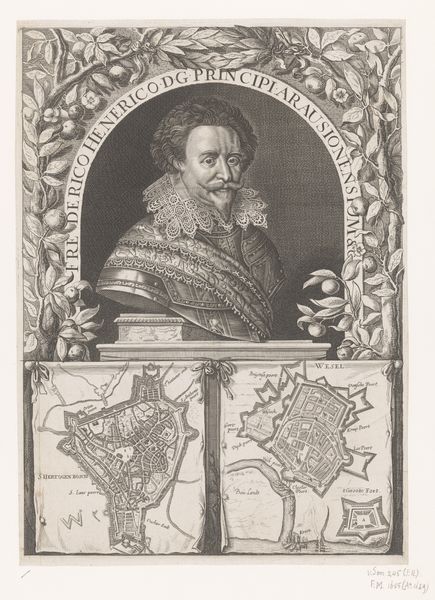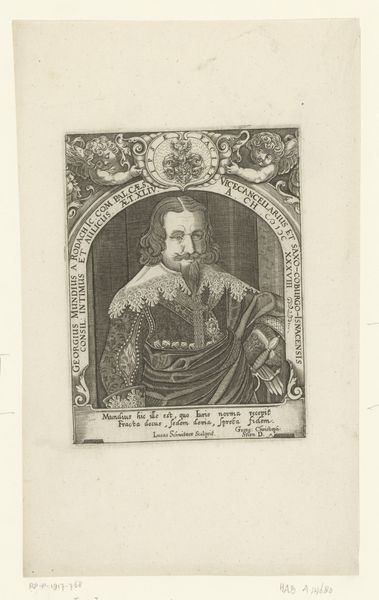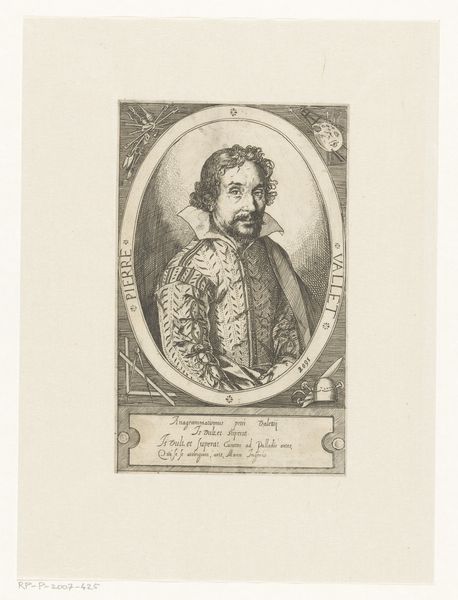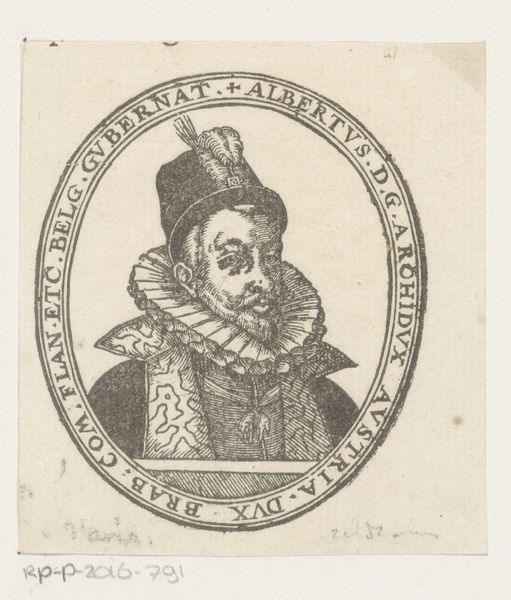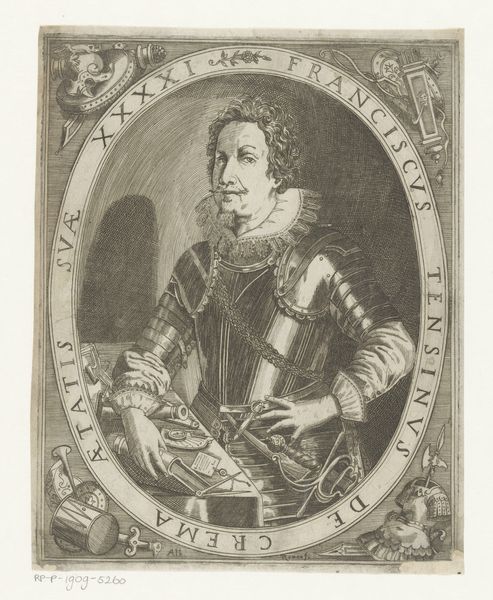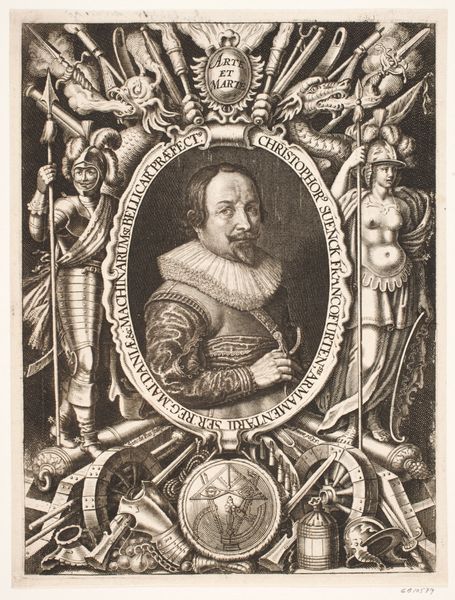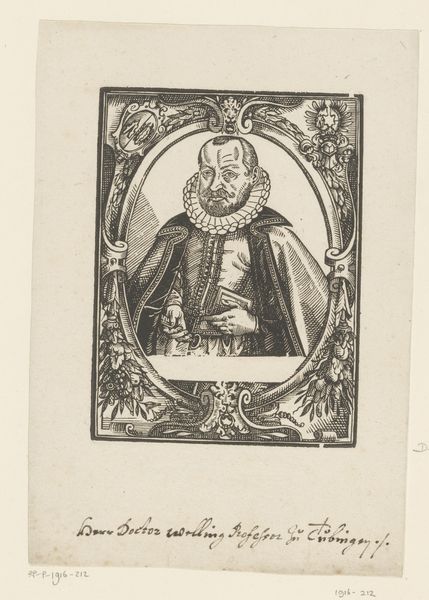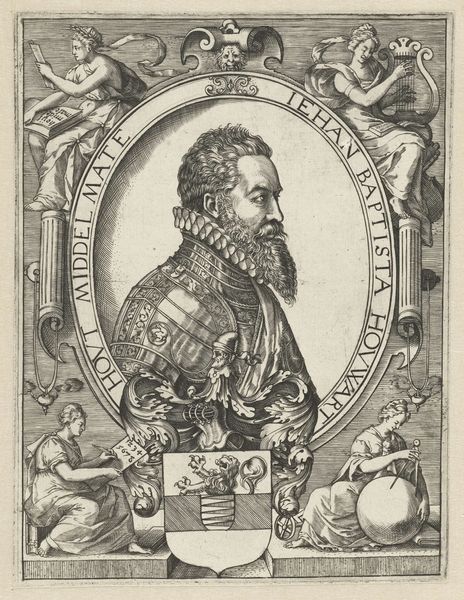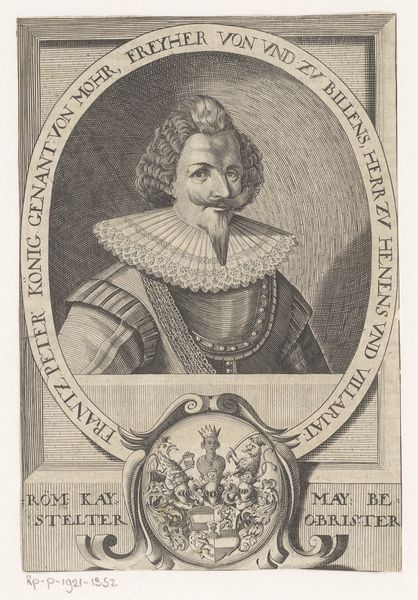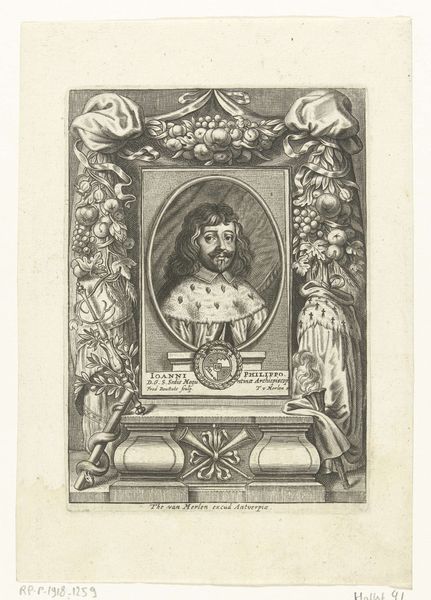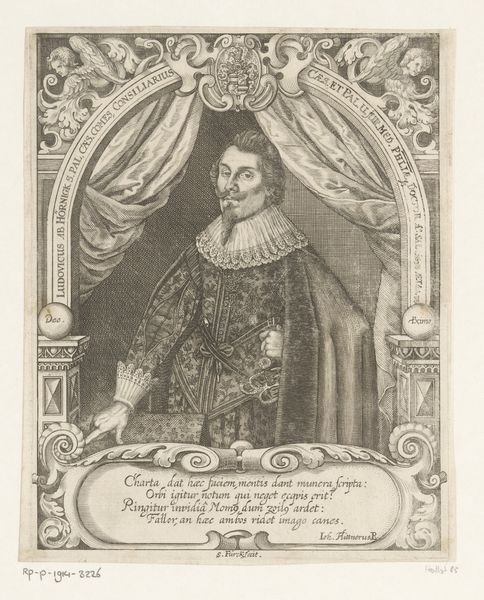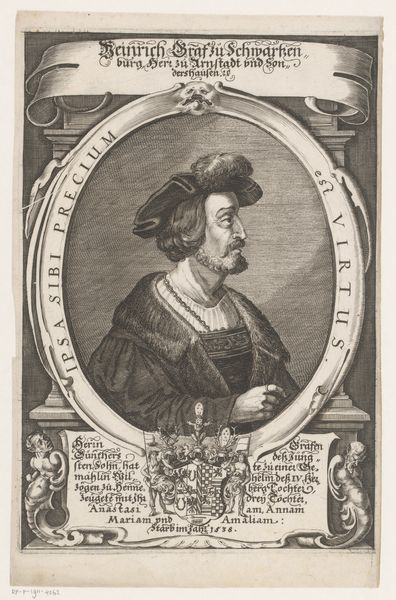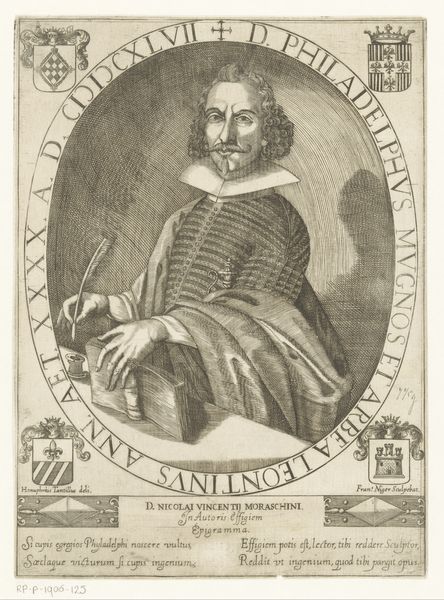
Portret van Frederik Hendrik met een kaart van het beleg van Den Bosch in 1629 1629
0:00
0:00
print, engraving
#
portrait
#
baroque
# print
#
old engraving style
#
history-painting
#
engraving
Dimensions: height 170 mm, width 118 mm
Copyright: Rijks Museum: Open Domain
Georg Cöler’s portrait of Frederik Hendrik with a map of the Siege of Den Bosch was made sometime in the first half of the 17th century. The print celebrates the Dutch victory over the Spanish at Den Bosch in 1629. Prints like this played a crucial role in shaping public opinion and constructing national identity during the Dutch Golden Age. The image presents Frederik Hendrik as a military hero and a symbol of Dutch power. Visual codes include the armor, the sword, and the laurel wreath, all of which evoke classical imagery of military glory. The map of Den Bosch is not just a geographical reference, but a symbol of Dutch territorial claims. Such imagery was not neutral. It served the interests of the ruling class and the military establishment. Prints like this helped to create a sense of national unity and to legitimize the power of the House of Orange. To understand this print fully, we need to research the history of the Dutch Republic, the political context of the Eighty Years' War, and the role of visual propaganda in shaping public opinion. By combining formal analysis with historical research, we can gain a deeper understanding of the social and political significance of this image.
Comments
No comments
Be the first to comment and join the conversation on the ultimate creative platform.
